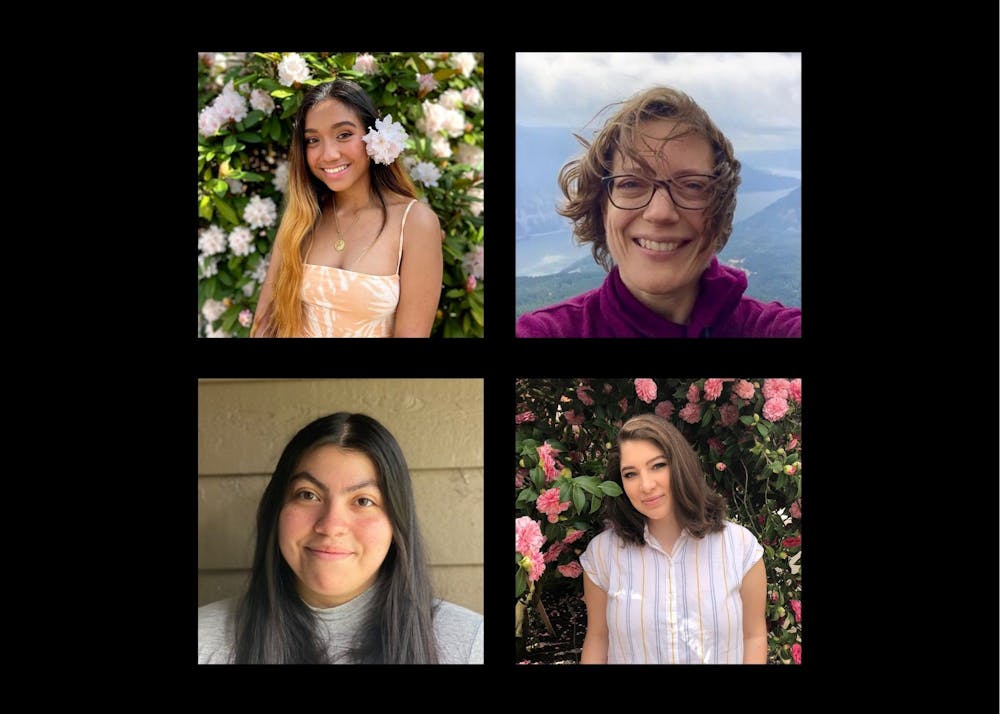It’s no secret the University of Portland needs to address racism in our community. Sandy Chung shed some light on what was happening behind closed doors in the administrative levels at the school last summer, but students have felt the lack of representation among UP faculty for years. Seeing your people only reflected in non-faculty, service staff positions — positions that go mostly unappreciated — affirms that even at the university you chose to dedicate your time to, racism has a tight grip.
The gross under-representation of professionals of color at UP illustrates that people are being denied places at the table, and this isn’t unique to UP or the educational system. The pandemic has highlighted many inequities, particularly those in our health care systems. Lack of representation among public health leaders and policy makers contributes to the inequitable allocation of health care in this country and has certainly influenced the vaccine roll out. But who exactly is deciding who is part of the conversation? This question underlies the UP Public Research Fellows, a program that is trying to encourage more public research.
Public research focuses on destroying the barriers that prevent people in the community from taking a role in important conversations. The aim of the program is to instill in students and faculty the importance of working alongside communities to solve some of our most pressing societal problems, instead of acting as if expertise in one particular field helps understand the needs of the community. It aims to dissolve the “ivory tower” of academia. This year, the programs’ research projects are focused on the theme of displacement and justice. Students, along with their faculty mentors, have been working on projects within this framework for the past academic year and will showcase their research to the public (including all Beacon readers!) on Thursday, April 29.
Our group started with the idea that the pandemic has caused displacement of people of color from the basic right to good health. But ultimately, we found that the pandemic isn’t the cause of this displacement. Instead, inequalities in COVID’s burden on communities is a symptom of the underlying racism in our society.
Reams of data show that health inequities in the US are real and significant. The number three is an easy one to remember. Hispanics are three times more likely than whites to lack health insurance; Black mothers are three times more likely to die during childbirth than white mothers; here in Oregon, Hispanics are three times more likely to have died from COVID than are whites.
These inequities are well known to public health officials, and the fact that COVID has impacted BIPOC communities most severely is not a surprise. As the COVID vaccine rollout began, some states and localities tried to allocate scarce vaccines in a way that would prioritize those groups most at risk. Yet four months into vaccine distribution, Blacks and Hispanics are about 35% less likely to have received a COVID vaccine than whites.
In Oregon, the rate of vaccination for Hispanics is only half that of whites. It’s tempting to attribute this outcome to differences in demographics, occupation, or vaccine hesitancy (although data show that vaccine hesitancy among Hispanics is equivalent to that among whites). These explanations are convenient because they allow the dominant majority to avoid culpability. But the root of disparities in COVID disease burden and vaccination runs much deeper.
We can't explain these disparities without acknowledging the overwhelming role of racism in our society. As science majors, our fallback way of understanding a problem is to acquire data (see above!), but academic research to define the scope of inequities is only the first step. As public research fellows, we want to understand the problem from the community perspective.
We spoke to Sophie Graham, a volunteer at the Oregon Convention Center vaccination site, and heard her firsthand insight on the vaccine roll-out. Every day ~6,000 people come to the Convention Center for a COVID vaccine, some from considerable distances. Transportation to and from the Convention Center is a common hurdle for the patients Graham helps. One patient said she had to plan her vaccine appointment to coordinate a ride to and from the facility with her son who needed the family car to commute to work immediately after the appointment.
In one case, a couple could not get vaccine appointments on the same day, but with only one vehicle and inflexible work schedules, it was almost impossible for them to make the trip twice. They came together, hoping that both could get vaccinated despite only having one appointment that day, but only one walked away vaccinated. Keep in mind that these stories are from the patients who did manage to make it to the Convention Center; how many people were in similar situations, but were not able to solve the problem and thus remain unvaccinated and at risk?
Other factors contribute to displacing people of color from vaccination. Individuals without access to the internet to schedule their first appointment or without an ID cannot get the vaccine. Around the Convention Center, there is a large homeless population, and while these individuals can easily walk to the convention center, they may not have the proper identification or access to the internet to register for the vaccination. Graham says these folks often come to the Convention Center asking for leftover vaccines at the end of the day, but without an appointment, they are turned away. In Oregon, as in many states, an oversized share of the homeless community is BIPOC.
We also spoke to Anayeli Franco from Virginia Garcia Memorial Health Center, a non-profit primary care clinic in Washington and Yamhill counties that serves predominantly Hispanic patients, including those lacking health insurance. Virginia Garcia has been administering around 650 COVID vaccines per day to their patients. In discussing challenges of the vaccine rollout, Franco highlighted hurdles that are more related to long-standing systemic problems than to vaccine-specific issues. For instance, their ability to deliver vaccines isn’t limited by the doses they receive, but rather by the providers available to deliver those doses. To administer vaccines, they need to pull providers from their usual clinic duties, which means that a prenatal checkup or a well-child visit doesn’t happen. They are chronically short on providers and experience high employee turnover, because the salary is low compared to clinics that serve higher income patient populations with access to good health insurance. This really underscored for us how systemic health care issues affect the ability of some minorities to get vaccinated, despite the enormous effort to get vaccines to clinics. It’s not good enough to just distribute vaccines to clinics and then assume the job is done.
So what can we do? Taking on a problem as ingrained as health inequity in our society is daunting. And the solution will remain elusive if we try to solve it in isolation from all the other inequalities in our society. It’s not as simple as just opening more clinics. Availability of healthcare does not equal access to health care. Access to available health care is blocked for many minorities by lack of transportation, lack of paid sick leave or health insurance, lack of childcare, and unsustainable wages that result in working multiple jobs. Moreover, some minorities may feel hesitant to seek out medical care, and understandably so, given the underrepresentation of minorities in health care and the history of abusive studies such as the Tuskegee syphilis study.
These factors leave individuals confused as to whether to trust the healthcare system at all, and many people of color have confessed to not feeling understood in their own doctor’s office. Building and nurturing true partnerships with the communities that need more resources is vital to tear down these barriers and prevent such disparities in future crises. This requires listening to and amplifying the voices who need to be heard. It requires advocating for inclusion of minorities as health educators and navigators for their communities, and insisting on representation in decision-making processes and seats of power.
You might be thinking, “this seems pretty bleak and just too big to tackle.” But local action can have real, positive consequences. For instance, The Coalition of Communities of Color and Portland State University teamed up to produce a report, “The African American Community in Multnomah County: An Unsettling Profile,” which was meant to be an open resource for policy makers, advocates, researchers and educators. It was a true partnership between PSU and a community organization, and it provided not only data, but also concrete policy recommendations on everything from economic opportunities and housing to education and civic engagement.
So what can you do? Use your Spanish speaking skills to volunteer with the Virginia Garcia outreach vaccination clinic or the convention center mass vaccination site. Sit in on town hall meetings to learn about the work of local racial and equity committees. Get your community organization to become a member of Oregon Health Equity Alliance or Portland United Against Hate. Join or donate to a local racial justice organization. If not now... when? The next global pandemic?
Alex Gonzalez is a senior biology student and Public Research Fellow. She can be reached at gonzaale21@up.edu.
Hailey Rosario is a senior biology student and Public Research Fellow. She can be reached at Rosarioh21@up.edu.
Dulce Sanabria Garcia is a senior biology student and Public Research Fellow. She can be reached at sanabria21@up.edu.
Susan Murray is an Associate Professor of Biology and Public Research Faculty Fellow. She can be reached at murrays@up.edu.
Have something to say about this? We’re dedicated to publishing a wide variety of viewpoints, and we’d like to hear from you. Voice your opinion in The Beacon.








